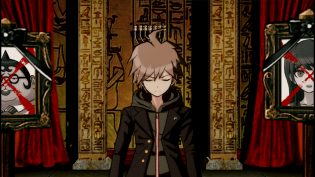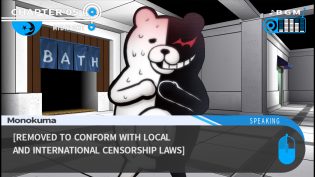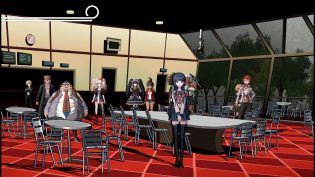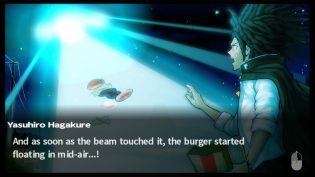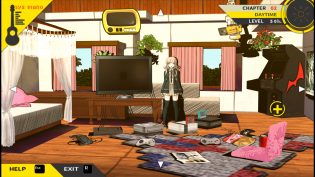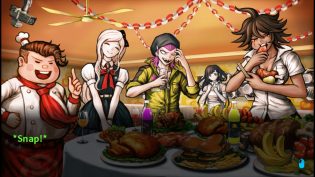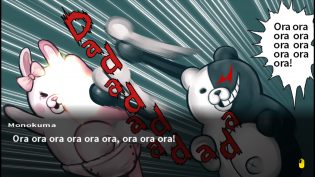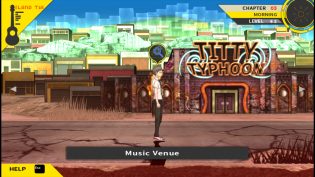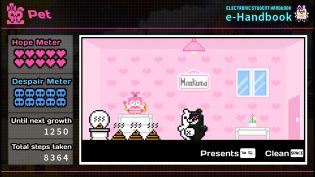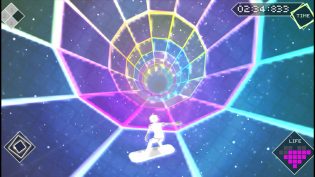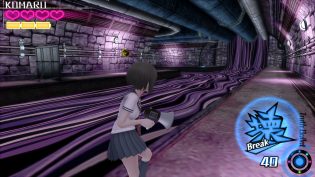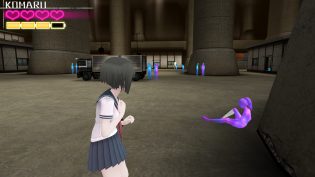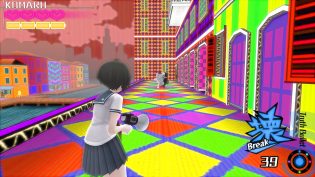Just like the Zero Escape series, Danganronpa has been a series I’ve been curious about for a very long time now. It has gained a huge following outside of Japan years before getting an official localisation for its quirky dark humour, fantastic soundtracks and curious approach to mixing adventure game visual novel elements in rather novel ways. But are they really that great?
Before I move on, I wanted to point out that I’ve played the entire series on the PC and the ports are pretty okay. The controls on kb+mouse can be a bit weird, but you can always use the controller if you feel like it.
Danganronpa: Trigger Happy Havoc – the first entry in the series is a bit of a slow burn as it starts. “Ultimate” students, each possessing an exceptional proficiency with a talent (and thus also fitting a specific archetype), attend a special high school designed just for them, but things take an unexpected turn and they find themselves confused and locked inside the high school. And to make matters worse, in a bizarre twist of events an robot-plushy bear Monokuma tells them that the only way to escape is to kill another and get away with the murder. Which, of course, doesn’t happen right away, so the starting parts of the game play out as a mostly normal visual novel, with some strange first person exploration mixed in and an overall Persona-esque feeling. But then the murders do start…
And that’s where the main novelty of the game kicks in – after collecting all the possible clues on the murder, every surviving student (including the murderer) has to participate in a long debate, during which the murder will get solved. It works as a collection of different minigames, that require you to either point out contradictions, find correct arguments/clues and etc, but works in a surprisingly entertaining and engaging way. Sure, this is still murder mystery adventure, but the format of debate makes the process much more interesting.
Even though it has lots of flaws. Some minigames are a bit frustrating, though luckily short. Some tend to be completely stupidly phrased – one requires you to spell a medical condition, that is connected, but not the same to the one that is actually true in the game, for example. And some parts just feel like pointless padding, with unnecessary repeats of obvious things. Though, I suppose, that’s something that is common to the visual novel parts as well and this usual frustrating slightly dimwitted nature of the main character is probably caused by the fact that the games were originally portable so they expected the players to have shorter sessions and thus shorter attention spans. Because of that, mainly, I felt tired and somewhat drained by the end of the game (somewhat unlike my experience with 999), but still liked how the story and storytelling through gameplay went. Oh and the music is genuinely amazing.
Danganronpa 2: Goodbye Despair starts as you’d expect a sequel to the first game to start – by taking a familiar approach and then suddenly giving it a completely new twist, only to return to the original twist but with a new fresh coat of paint later on. It starts fresh, the music is still absolutely amazing and the game doesn’t seem to rely on the original too much. There are still “Ultimate” students, defined by their proficiency in a specific talent, and they are still connected to the special school they go to, though this time they can’t leave not that school, but rather a series of islands somewhere in the middle of nowhere. The premise is ultimately the same – kill someone and get a chance to escape, but the game does know how to make a similar premise work in a different way. And so, despite a lot of similarities, a lot about the sequel feels different and some of the character roles are much more interesting then they ever were in the first game.
Though… not all “feels different” is “better”. A lot more characters in this game feel obnoxious, rather than quirky or funny, for example and, as if to emphasize that, a lot more filler with all these characters is introduced, to the point where you just want people to die already so the story can move on. Sadly, filler and unwelcome changes are present in the debate part of the game as well. As before, you attempt to solve the crime during an all-out debate, cross-checking clues and finding contradictions via several minigames. But, apart from the actually good change to the main debate minigame, where you can now also agree to points, instead of just shooting down contradictions, all other minigames were made worse, and the new ones are annoying. One of the new minigames is too chaotic to be fun, while being just an unnecessary twist to the main minigame. Another is just a slow boring minigame that completely ruins the pace of the investigation. And one of the changes to the minigames from before makes said minigame less confusing (which is good), but painfully slow.
The last actually led to a situation that essentially looked like this – everyone: “Wow, if only we knew what this thing was, this thing filled with water, and shaped like a balloon…” Minigame: “You spell “WATER BALLOON” for 2 minutes.” Everyone: “Wow, no way! Water balloon?! Wow!” It feels like a complete waste of player time and isn’t helped that debates themselves now have a recess and are divided into two halves just because they are this pointlessly long. A lot of the middle section of the main story also feels like almost mindless filler, with occasional cool storytelling ideas and truly amazing character development points, but also hours upon hours of “can we please move on now” sections. It does get better by the end and the game is still worth it, but I felt even more drained and tired by the end of it than with the first one and don’t feel like it is as essential or as good as the original was.
Danganronpa Another Episode: Ultra Despair Girls is a surprise. Unlike the main games in the series, it’s an action adventure game and it has this undeniable budget-y/mid price game feel to it, once common with previous console generations and rarely found today. And most surprisingly – it’s very good. Despite being not focused on the same novel elements of the main series – the big cast, the murder mysteries, the debates – and instead mixing third person shooter/survival action elements with puzzles, and not being very novel with that, the game manages to feel fresh and fun throughout. To the point where I actually enjoyed playing it most out of the series so far – there’s barely any filler, the story is always moving forward and the gameplay is simple, but engaging enough.
I mean, sure, it can be rough around the edges – the shooting here isn’t exactly Resident Evil 4 with a handgun or anything like that, the locations are pretty simple (but visually interesting due to the usual Danganronpa art style) and some of the puzzles are more of an annoyance than a fun challenge. Its story is also not always exciting, though the topics brought up might be one of the darkest in the series, paling in comparison only to some of the things discussed in the second game, all while still trying to be darkly humorous without being tasteless. And the whole main concept of having unique bullet types to not just shoot but also puzzle your ways out of situations feels a bit underused (especially with kb+mouse controls, but it somehow still feels rewarding nonetheless). Yet, unlike the two main games in the series where I felt tired of playing at times, I constantly wanted to get back to this game and finish it.
If you like your third person action adventures to be more like “methodical shooting”/survival action, and if you like Danganronpa, I definitely recommend this one. If you just like this kind of gameplay but haven’t played other titles in the series – it might be a bit more confusing to get into it and if you’d get interested it will spoil a lot of interesting elements for the first two games for you. Yet, you will probably still enjoy it for the gameplay itself.

In general, I feel like Danganronpa series started as a very cool and curious experiment and then inevitably got hit by the usual “let’s turn it into a franchise” decision, with the undeniable Japanese flavor of having OVAs, anime series, manga and light novel books and etc, which lead to the series becoming a bit more formulaic and more insane in terms of the story. Just like it happened with Zero Escape, just on a bigger scale due to bigger popularity. The games are still all enjoyable, but I do suggest trying the first one and then deciding if you want to move to the others (though Ultra Despair Girls is its own thing gameplay-wise). Do check the soundtracks, though, those are undeniably amazing.


